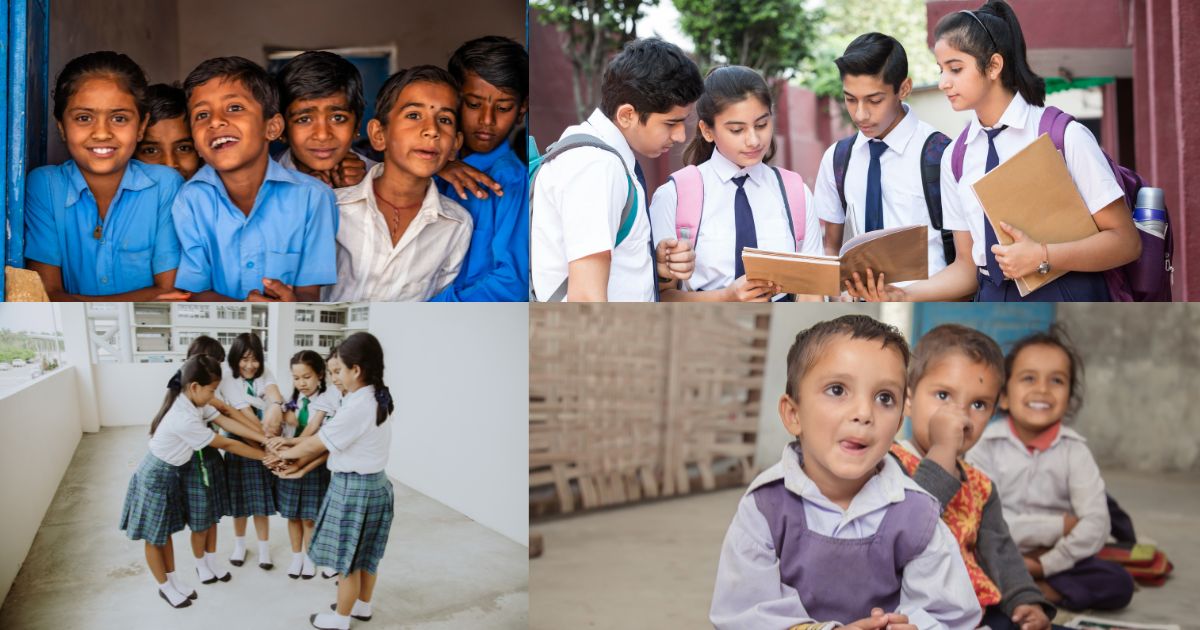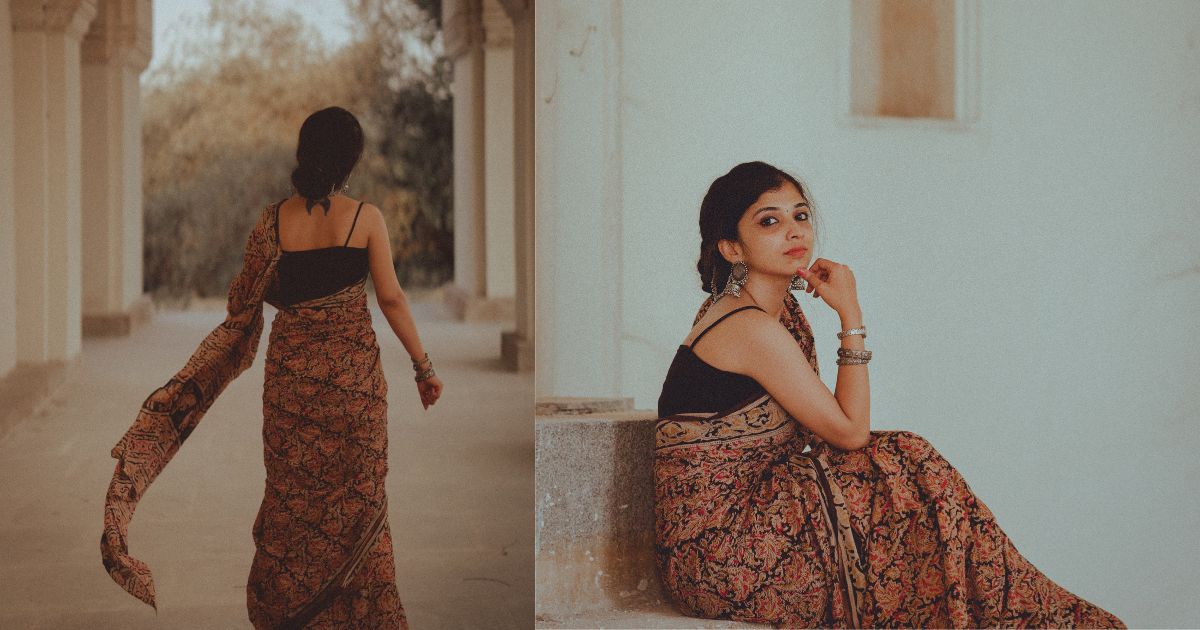“The man took out the dresses and placed them before me. As soon as he did, he began to cry bitterly. ‘Poor clothes’, he said, ‘where will they end up’, ‘into whose hands” ‘will they take care of them,’ etc. […] When he calmed down, he told me: ‘It’s necessary to ‘chayar’ them, otherwise they’ll resent leaving this house’ ‘Chayar’ represented bidding farewell decorously. This was not a common business […]”
Arturo Jiménez Borja.
It is not foreign to any reader to know the great tragedy that the violent race for colonization turned out to be, whether we are talking about America, Africa, Asia or Oceania. One of the biggest surprises for the promoters of this cruel phenomenon was finding a strong presence of native communities that had been inhabiting those lands for centuries, if not millennia.
Not only were they aware of their existence, but also that these communities lived in harmony and, many of them, had a defined and functional socio-political organization, despite systematic erasure attempts of this part of history.
Particularly, geographically situating ourselves in what we now know as South America, there is no doubt that “racism and ethnic and gender discrimination persist until today as a legacy –subtle and not so subtle, but lasting– of colonialism”.[1]
It is so that, some time later, after defining current geographical borders, native minorities continue to be exploited, be it for their exotic speech, conducts or, in the case that pertains to us, clothing.
Having said that, fashion, or rather, the way in which one decides to dress, the accessories one uses, the fabrics one chooses, the colors one combines, each and every one of these elements have a meaning that transcends the merely ornamental. One of the main purposes of fashion, if not the most essential of all, is to serve as a physical representation of a feeling, a political message, or, on a larger scale, it can compile the ancient customs and traditions of an entire community, in other words, their cultural identity.
Up to now, we have briefly visited two variables: 1) Native communities as a socially relegated population with a history as rich as it is complex; and, 2) The transcendence of fashion for these communities.
Let us pause to ask ourselves the following question: How can we provide representation to native communities in the field of the fashion industry?
It is then that, clearly delimiting the topic that will be addressed in this article, we seek to tentatively propose a mechanism for dialogue and representation for native communities, specifically, the Andean Community, in the context of the fashion industry.
Andean or Native?
In Peru, the Political Constitution of the State, in its article 89, distinguishes two types of communities: a) Folk Community and b) Native Community. The constitutional text contemplates them in the following way:
Article 89.- “The Folk and Native Communities have legal existence and are legal entities. They are autonomous in their organization, in communal work and in the use and free disposition of their lands, as well as economically and administratively, within the framework established by law. […] The State respects the cultural identity of the Folk and Native Communities.”[2]
The first of these is widely regulated by Law No. 24656, while in the case of the second it is found in Decree Law No. 22175. However, basically, its distinction lies in the fact that folk communities refers to “communities located in the rural area of the Andes of Peru”[3] and native communities “to […] communities located in the rural area of the Amazon”[4].
Andean Fabric: Transcendence and Ancestry
Focusing on the Andean communities and historically speaking, we see that they have always considered the fabric as an essential mean of communication even from pre-Hispanic cultural contexts, using it to express their ideas, political positions, cosmogony, social relations, etc. [5]
In simpler words, the activity of the weaving, the inputs used, the method used and the patterns or motifs selected, are integrating elements of a clear manifestation of their cultural identity. “The decoration of the textiles, […] does not move only around beauty: it seems that they have tried to express certain messages, such as the marks of the craftsman who executed the work, the time it was made, whether in summer or winter, and some other communications”.[6]
Far from just making a garment that protects them from the cold and rain, they go above and beyond by giving life to textiles, filling them with ideas, hopes, dreams and stories.
For this reason, traditional clothing not only consolidates the cultural identity of a community, but also contributes to its cultural continuity. Taking into account their historical journey, “they have survived centuries, crossing the storm of wars, persecution of ideas, etc. Thus, they deserve to be known, studied and respected.”.[7]
After what was referred to in the previous paragraph, it is not surprising that traditional clothing is considered as an expression of folklore or Traditional Cultural Expressions (TCEs), a term defined by the World Intellectual Property Organization – WIPO, as: “the forms in which traditional culture is expressed; forming part of the identity and heritage of a traditional or indigenous community; and being passed down from generation to generation”.[8]
Fetish for the Exotic
Based on what was expressed in the previous section, knowing the importance of traditional clothing for the Andean community, one would think that this message would be strong enough for the world and its minds to understand that using cultures for commercial purposes, emptying them of their meaning is something wrong
However, as history teaches us, the power dynamics ruled by the dominant culture, the prevailing economic model in almost all countries, and other factors perpetuated a phenomenon that dates back many decades, but only in recent years has been denounced and made visible as it deserves, we are talking, of course, about cultural appropriation or, as we would like to call it in the context of the fashion industry: the culture of the exotic fetish.
This cult of ethnicity, focused solely on a visual pleasure for the consuming public, leaves the communities and populations that hold this tradition and transmit it from generation to generation into total oblivion. “Precisely, in the last decade, especially in the last five years, several fashion designers and big brands like H&M or Desigual have taken the visual form of the traditional fabric design, changing the materials and meaning, or just stripping them of this.”[9]
It is valid to clarify that our purpose is not to inquire further into the phenomenon of cultural appropriation and its distinction with cultural appreciation, since this has already been the subject of our analysis in an article that we invite you to review.[10]
Nevertheless, let us be perfectly clear on something, “the very cultural heritage that gives indigenous people their identity […] is under real or potential assault from those who would gather it up, strip away its honored meanings, convert it to a product, and sell it. Each time that happens, the heritage itself dies a little, and with it its people.”[11]
Faced with this, we ask ourselves: How do we give glimpses of solution to this problem? This question acquires connotation in a world where most of the entities and publications dedicated to this topic only point out the problem and lament the situation.
Andean Institutionality[12]
When referring to the Andean Community, we cannot miss the opportunity to mention a political community under international law whose main purpose is to achieve balanced, autonomous and integrated development for its member states and for the Andean people. This is called the Andean Community or CAN by its acronym in Spanish.
The CAN was created on May 26th, 1969, through the signing of the founding treaty known as the “Cartagena Agreement”, establishing the axes of Andean integration, defining its institutional framework and regulating the policies and mechanisms that must be implemented by community organizations.
The CAN member states are: Bolivia, Colombia, Ecuador and Peru, united in their past, geography, natural and cultural diversity; and in their common goals. Additionally, associated States include: Chile, Argentina, Brazil, Paraguay and Uruguay. Finally, as observer states: Spain.
The Andean Community is made up of bodies and institutions, which are linked to the Andean Integration System. The purpose of the SAI is to allow effective coordination between all bodies and institutions in order to deepen Andean integration. This System makes the CAN function almost like a State does. Each one of these instances has its role and performs specific functions
Within the Andean Integration System we find the Consultative Council of Indigenous Populations, which acts as a representative body of civil society. Likewise, we stumble upon the existence of a position called “General Director 3”, which is in charge of social affairs, special areas and, attention to this last one, intellectual property.
Other bodies that deserve special attention for this topic are: Ad Hoc Group on Governmental Experts in Trade Defense, Andean Ad Hoc Committee on Intellectual Property and the Andean Committee of Heads of International Cooperation Organizations of the Andean Community.
Following the common thread, it is possible to identify that the CAN counts with international cooperation entities in South America to assume the representativeness of the Andean people in conflicts of cultural appropriation and breaches of intellectual property regulations. Especially when this international organization already has a legal mechanism related to this issue called the “Regulatory Framework for the Protection and Safeguarding of Cultural Heritage” since November 24th, 2015.[13]
Conclusions
In concluding words, responding to the question posed at the beginning of this article, we believe that it is possible to provide Andean communities with representation in the current panorama of conflicts of interest in the field of the fashion industry.
The CAN, as an entity of international law present for more than 50 years in the South American region, turns out to be the right one to undertake the tasks of representation, defense, cooperation and other necessary acts in order to safeguard the cultural identity of the Andean population materialized in their traditional clothing.
Finally, far from reiterating an already known problem, we insist on the fact that this task is not only the responsibility of the States that house the Andean or native communities, but also the responsibility of civil society and, especially, lawyers specialized in Fashion Law, professionals with a high degree of knowledge in the mechanisms, edges and legal instruments necessary to reach the common goal: Justice.
References List
[1] Suzanne Oboler, Raza, etnia, nación y ciudadanía en el imaginario de las Américas, in El Racismo Peruano. 9. Ministry of Culture. (2015) https://centroderecursos.cultura.pe/sites/default/files/rb/pdf/el-racismo-peruano.pdf.
[2] Peru’s Politic Constitution. Article 89. 29 de diciembre de 1993 (Peru).
[3] Antonio Peña Jumpa. Las Comunidades Campesinas y nativas en la Constitución Política del Perú: Un Análisis Exegético del Artículo 89º de la Constitución, in Derecho & Sociedad, 40, 195-206. (2013). https://revistas.pucp.edu.pe/index.php/derechoysociedad/article/download/12800/13357/0.
[4] Idem.
[5] Reguina Parra Vorobiova. Moda étnica: códigos ancestrales y propuestas contemporáneas, in deSignis, 32, 123-132. (2020). https://www.redalyc.org/journal/6060/606064548011/html/.
[6] Arturo Jiménez Borja. Historia del Vestido, in Vestidos Populares Peruanos. Santillana S.A. (1998). https://fundacionbbva.pe/wp-content/uploads/2016/04/libro_000047.pdf.
[7] Idem.
[8] WIPO. Traditional Cultural Expressions. https://www.wipo.int/tk/en/folklore/.
[9] Felisa Mújica Roncery. El tejido indígena en el diseño de moda actual: una mirada entre el trabajo manual y la fabricación industrial, in Pensamiento palabra y obra, 20, 58-71. (2018). https://www.redalyc.org/journal/6141/614164651005/html/.
[10] Vide The Hunt for ‘exotic’ and ‘diverse’ in fashion industry: Cultural Appreciation or Appropriation?.https://fashionlawjournal.com/the-hunt-for-exotic-and-diverse-in-fashion-industry-cultural-appreciation-or-appropriation/.
[11] Barbara Pozzo. Fashion between Inspiration and Appropriation, in Laws, 9, 5, 12-37. (2020). https://expeditiorepositorio.utadeo.edu.co/handle/20.500.12010/20883.
[12] Para el presente acápite se citó directamente del portal web oficial de la Comunidad Andina.
[13] Parlamento Andino. Marco Normativo para La Protección y Salvaguardia del Patrimonio Cultural, in Serie Marcos Normativos, 4. (2016). https://www.parlamentoandino.org/images/gestion/armonizacion-legislativa/marcos-normativos/4_Marco-Normativo-Salvaguardia-y-Protecci%C3%B3n-del-Patrimonio.pdf.
Author: Carlos Eduardo Wester Pérez

















